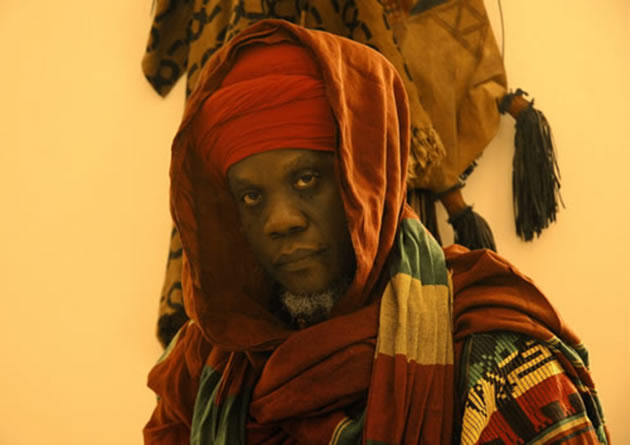Artists, their dressing, personalities

Knowledge Mushohwe Art Zone
THERE is no universal dress code for artists. However, it is not uncommon for artists’ choice of apparel to be branded ‘funny’, appalling, strange or too casual because of its uniqueness.
Most people outside the art world are frequently repulsed by artists’ personalities, including hairstyles, clothing and choices of recreational activities. A number of my artist friends with dreadlocks mention that their hairstyles are declarations of independence from the ‘normal’ way of life which they point out resembles a bureaucratic system.
They find that they claim to be a formal social system distasteful for the simple reason that prescribed conditions of living ‘boxes’ them and hinders wide-cast imagination and creativity. They see hairstyles as a form of rebellion against restrictions often symbolised by smart short and combed, oily hair.
Others find their dreadlocks to be a way to identify with their African roots, emphasising originality and the safeguarding of a heritage. Such visual artists’ art have a strong allegiance to race, nationalism, patriotism and the African legacy.
These would identify with conscious music, not necessarily because they identify with, or believe in the religious convictions packaged within the songs, but because they associate their struggle as Africans with messages of empowerment, independence and freedom.
Not many visual artists would be expected to win fashion shows. Unless one is really failing to make ends meet, it is normally by choice that they wear the simplest or most unusual forms of apparel.
For Visual artists, at least most of those I know personally, being elegantly dressed is not important. According to them, being smartly dressed is as systematic as it gets, a way of making everyone look and act the same. They find the system to be rigid and devoid of any creative space to manoeuvre.
Dress code may also be related to one’s identification with his/her culture. I know one visual artist that sometimes walks around everywhere, including the city centre barefooted. His argument is that if his ancestors spent their lifetimes on earth without shoes, he should be comfortable doing the same thing at least half the time.
Without doubt, his personality and living experience has had a deep impact on his work. Recently, he held a solo exhibition with several art pieces in forms of letters to God in diverse religions, mostly in Shona and including traditional African forms of worshipping. His beliefs are unfathomably rooted in the rationale that God is one.
Every religion, according to Munyaradzi may have ways and means to communicate with the single yet complex spirit based on its life experience, but on the other side there is the same supernatural, holy and omnipresent being.
Dressing up and ‘fashion planning’ does take time and it is time that visual artists would rather spend doing other things.
But in today’s world, where stereotypes are more profound than ever, the artists must not be so rigid to reject formal personalities during particular occasions.
When meeting new business partners for example, initial impressions to people one is meeting for the first time are important and it is vital that the artist ‘create’ a personality that the other party may be comfortable with and have confidence in.
It must be seen as regressive behaviour if a visual artist chooses to be different just for the sake of not wanting to feel conventional. Peculiarities in personality should be aiding the artist in achieving some goals and not in fact hindering development.
One negative trait is uncleanness, murkiness epitomised by lack of bathing and general tidiness. Indeed, that is being different but to what end?
It is to no one’s advantage if one invites germs and diseases under the guise of being an artist. It is difficult to know why some artists chose to care less about cleanness. One argument is that they have little time outside their realms of creativity but it is hardly an argument if the results of such negligence are detrimental to one’s health.
Other forms of artists’ preferred personality traits are alcohol and drug abuse. In moderate cases, intoxicants are taken in as recreational after long creative processes. They are ‘rewards’ following ingenious breakthroughs in one’s work.
Others seek a different sensation, a departure from the normal while some seek inspiration or a dissimilar trend of thought for their art.
But in extreme cases, drugs and alcohol become main inspiration for one’s work. Some visual artists do manage to perform their normal duties under that influence, but for others they end up enslaved to the point that their abilities to create become blunted.
Drug and alcohol abuse in artists may be a way of closing one off from the outside world, and can kill of innovativeness since one may end up unable to relate to the world around them.
As a result, addicts’ work fails to communicate with the audience because the abstraction in them may have meaning only to the creator of the work.
In normal cases, visual artists continue to struggle to relate to what they feel to be an inflexible world around them and achieve varying degrees of success in being accepted as a part of the society.
Drug and alcohol abuse in fact further alienates them from the world they make commentaries on through visual communication.
Intoxication is an extreme, but oddness appears to be a part of visual artists. Ideas for their work come at odd times, and their productive periods come in bursts.










Comments